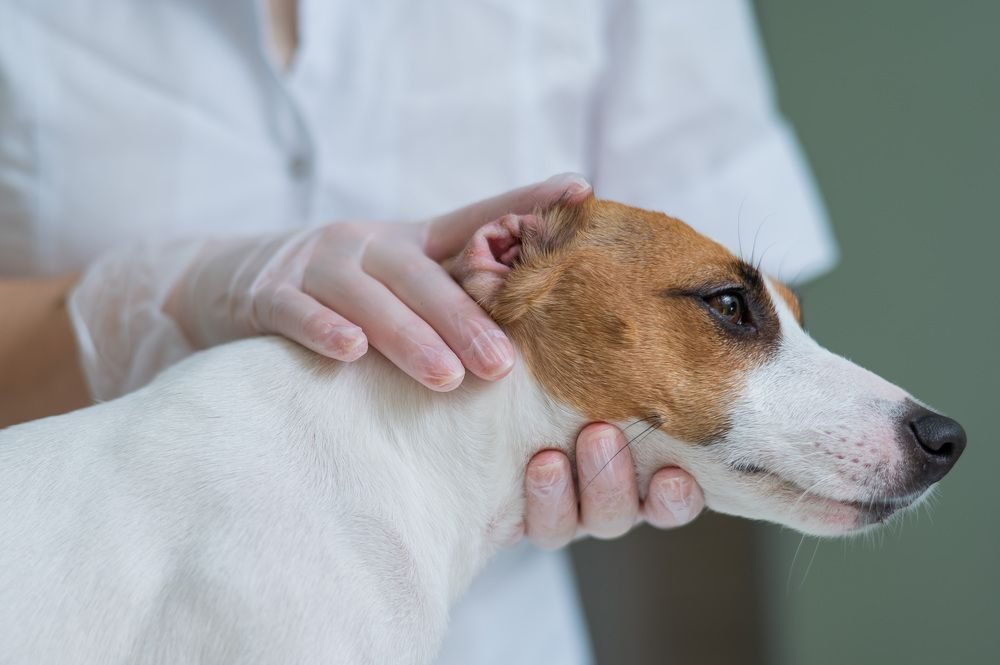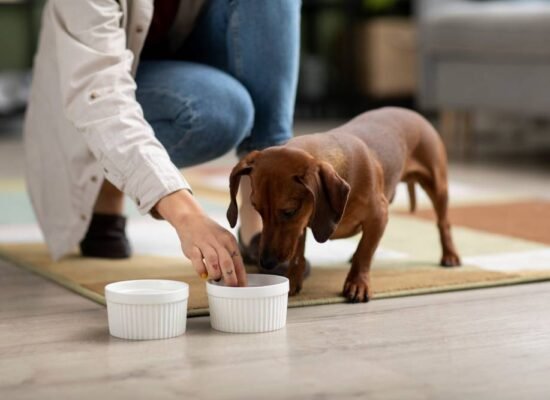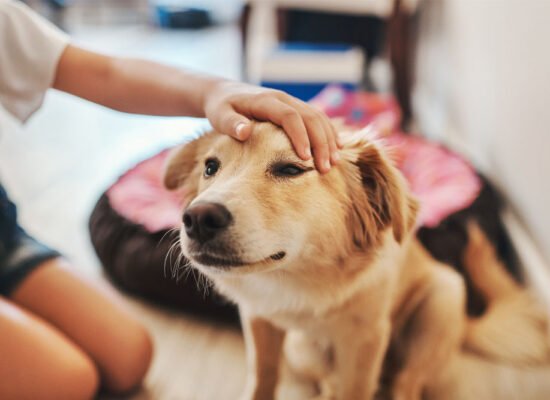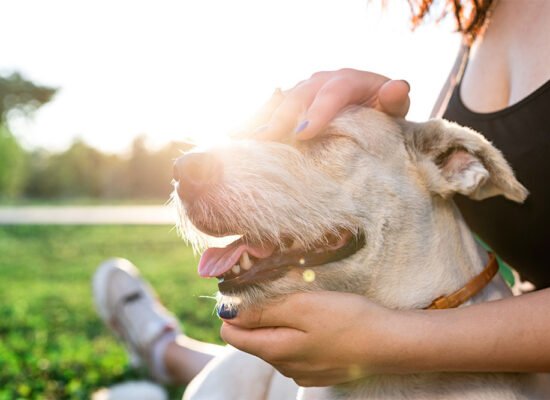Did you know that yeast infection is one of the various health problems encountered by dogs? Yeast infections can be uncomfortable for your dog, causing itching, redness, and a smell. The good news is that with the right knowledge and quick action, you can effectively prevent and cure dog yeast infections.
Moreover, in this blog, we’ll discuss some simple tips to help prevent yeast infections and how to treat them. We will also cover the symptoms and causes of yeast infections in dogs.
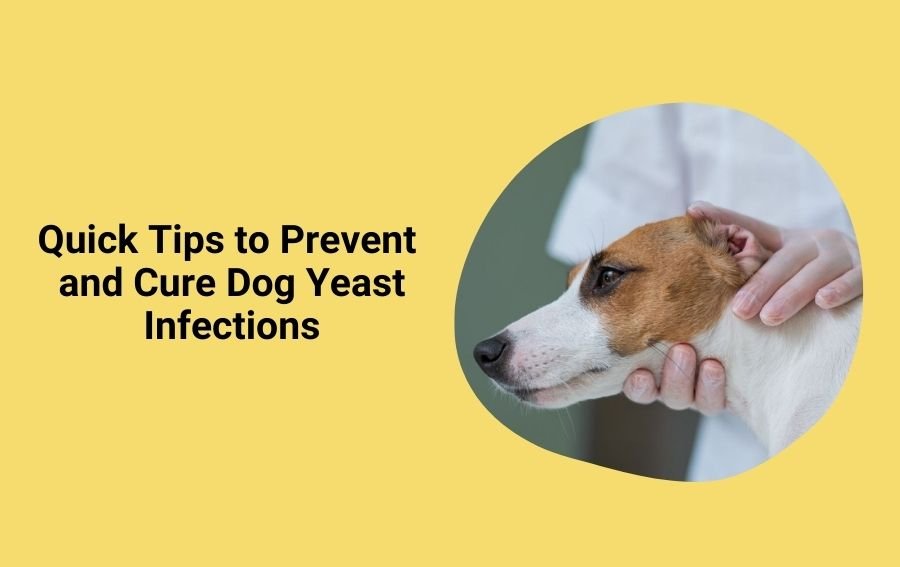
Below are the sections covered in this guide. Feel free to click any link to go directly to that topic.
- What Is a Dog Yeast Infection?
- What Are the Symptoms of Dog Yeast Infection?
- Why Do Dogs Get Yeast Infections?
- How Can You Prevent Yeast Infections in Dogs?
- Can Dog Yeast Infections Be Treated at Home?
- Best Home Remedies for Dog Yeast Infection
- Final Paw
- FAQs
What Is a Dog Yeast Infection?
A dog yeast infection happens when a naturally occurring fungus grows uncontrollably on your dog’s skin. Normally, yeast levels are harmless. However, some conditions can cause them to grow yeast infections. This overgrowth is usually found in areas that are warm and moist, for example, inside the ears, paws, or in the folds of the skin. Left untreated, it can make your dog quite miserable, resulting in chronic discomfort and further infections.
What Causes Yeast Infections in Dogs?
There are several causes of yeast infections in dogs. Some of them include the following;
- Moisture and Humidity: Yeast prefers to grow in wet areas, so those dogs who swim regularly or live in a humid area are more vulnerable to such infections.
- Allergies: Both food and environmental allergies can weaken your dog’s immune system, making it easier for yeast to take over.
- Antibiotics: Antibiotics play an important role in killing bacteria that keep yeast infections under control.
- Poor Diet: High-carbohydrate diets can contribute to yeast infections because yeast feeds on sugar.
- Weak Immune System: Furthermore, some disease processes or certain medications may bring the immunity level of dogs down, which makes them the reason for yeast infections.
As you can see, the causes are varied, so it’s important to address them from multiple angles to ensure your dog stays healthy.
What Are the Symptoms of Dog Yeast Infection?
It’s important to know the signs of eye infections so that you can act promptly. In addition, here are some common symptoms include:
- Redness in the eyes
- Swollen eyelids
- Excessive blinking or squinting
- Watery or yellow-green discharge
- Sensitivity to light
- Cloudiness in the eyes
If your dog shows signs of an eye infection, such as watery discharge or cloudiness, you can learn more about treatment and prevention in this guide on curing dog eye infections.
Why Do Dogs Get Yeast Infections?
There are several reasons why yeast infections can occur in dogs, and knowing these things might help you stop them from happening again. For instance, the reasons for this could start with a weakened immune system from illness, stress, or bad eating habits. Additionally, some breeds of dogs are more susceptible to yeast infections because they have skin folds or floppy ears, which is the ideal environment for a yeast infection.
Moreover, these predisposing factors aside, environmental allergies can still trigger infections. For example, any dog allergic to pollen, dust mites, or certain foods may have a flare-up of allergies, mainly during seasons. If your dog is struggling with food allergies, you may want to explore the best dog food for allergies. Furthermore, water or humidity keeps my skin moist to facilitate yeast overgrowth.
How Can You Prevent Yeast Infections in Dogs?
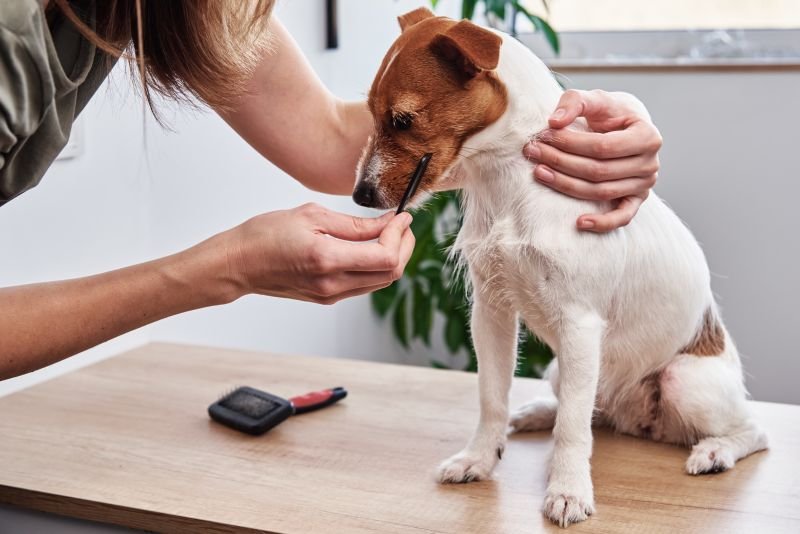
As with all things, prevention is better than cure, and you can take plenty of steps to reduce the chances that your dog will get a yeast infection. Initially, you should make it clear that a flawless hygiene routine is essential. In addition, always use anti-fungal shampoo to keep yeast levels under control. Also, be sure to dry your pup completely following baths or swimming so you do not create a moist environment that can set the stage for yeast overgrowth.
Here are some other prevention tips:
- Keep Your Dog’s Ears Clean: First, use ear cleaners approved by a vet to avoid moisture accumulation.
- Feed a Balanced Diet: Second, it is also recommended that a low carbohydrate and high protein diet is also useful in controlling yeast overgrowth. For more information on nutritious options, check out the best raw meat recipes for your pup.
- Use Probiotics: Third, probiotic supplements help the digestive system and may help get the yeast levels in your dog’s body back into perspective.
Following these prevention tips, you can reduce the chances of your dog getting a yeast infection.
Can Dog Yeast Infections Be Treated at Home?
Yes, mild yeast infections are easily manageable without a doctor. Some home treatments comfort the pet and control the symptoms, but in the case of worsening of the infection, the pet should be taken to the vet.
Some effective home remedies include:
- Apple Cider Vinegar: Applying a diluted mixture of apple cider vinegar with water and directly applying it directly on the skin areas with yeast may be helpful in controlling the growth of yeast as well as minimizing inflammation.
- Coconut Oil: Coconut oil is known for its antifungal benefits due to its ability to be applied directly to the skin with the aim of eradicating yeast infections.
- Yogurt: Plain, unsweetened yogurt is good for your dog’s stomach. Also, it provides good bacteria that inhibit the growth of yeast in his stomach.
Ultimately, it is always important to observe your dog’s response to the home remedy and get a vet if the condition remains the same even a week later.
Best Home Remedies for Dog Yeast Infection
Here’s a quick comparison of popular home remedies for yeast infections:
| Remedy | How It Works | Application |
| Apple Cider Vinegar | Balances pH levels and fights yeast growth | Dilute with water, spray on the skin |
| Coconut Oil | Contains anti-fungal properties | Apply directly to affected areas |
| Plain Yogurt | Introduces good bacteria to balance yeast | Add to your dog’s diet |
| Probiotics | Supports gut health and the immune system | Administer orally, based on dosage |
| Oatmeal Baths | Soothes itching and irritation | Bathe your dog in an oatmeal solution |
Overall, these remedies are very simple to implement and can treat yeast infections without the help of a doctor.
Final Paw
In conclusion, taking care of your dog and avoiding and treating yeast infections includes good hygiene, diet, and medical treatment. You should learn the signs of discomfort, use home remedies, and seek the services of a vet in case of a severe condition so that your dog can always be comfortable. Also, you shouldn’t sit around and wait for the problems to worsen. If you do something, your pet will be grateful.
FAQs
Q1. Can yeast infections in dogs be fatal?
Yeast infections do not kill you, but if left untreated, they may cause secondary infections with fatal health consequences.
Q2. How long does it take for a yeast infection to heal in dogs?
Mild yeast infections can disappear in 2-4 weeks, depending on the severity.
Q3. Is a yeast infection contagious to other pets?
Yeast infections are non-transmissible to other animals or humans.
Q4. What happens if yeast infections are left untreated?
If left untreated, yeast infections can aggravate, causing skin complications, discomfort, and secondary bacterial infections.
Q5. Are yeast infections more common in certain breeds?
Yes, dogs with skin folds or drooping ears, such as the Bulldogs or Cocker Spaniels, are more likely to get yeast infections.

